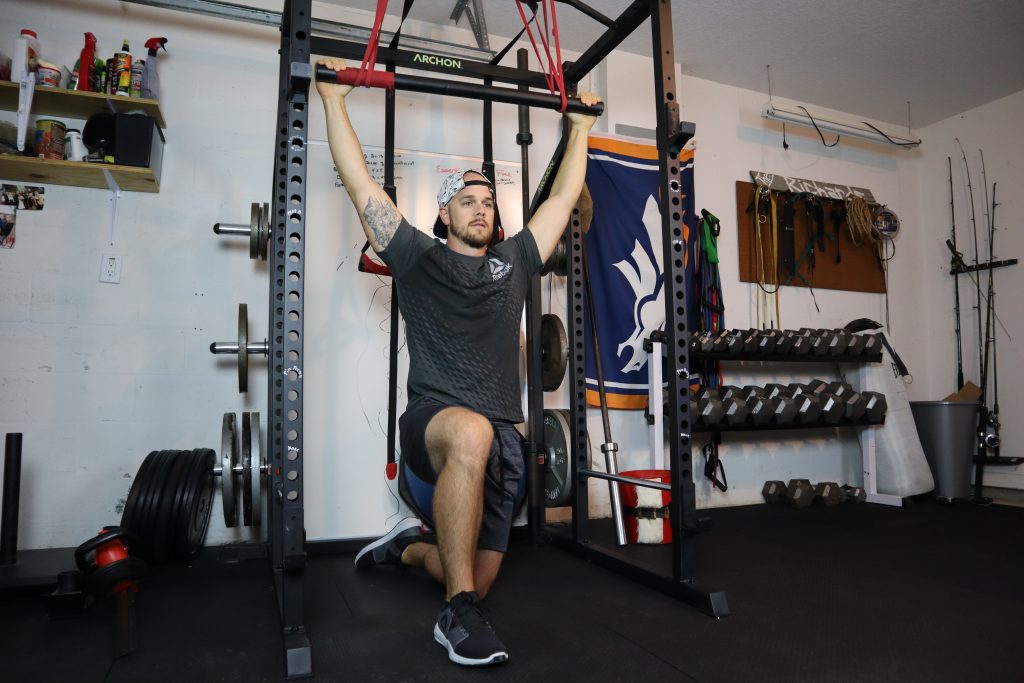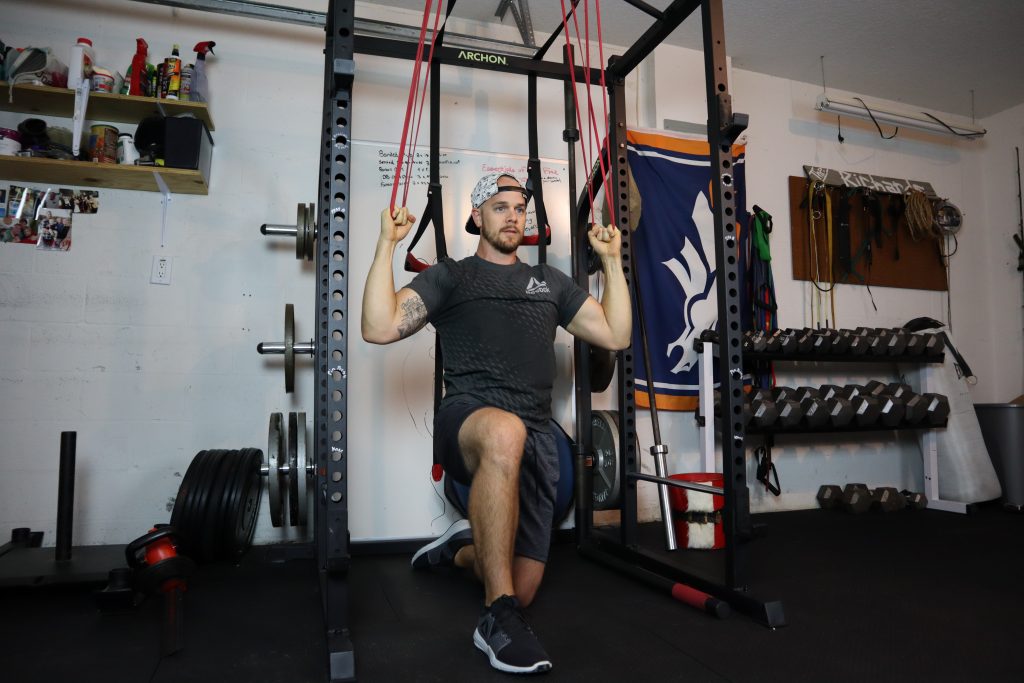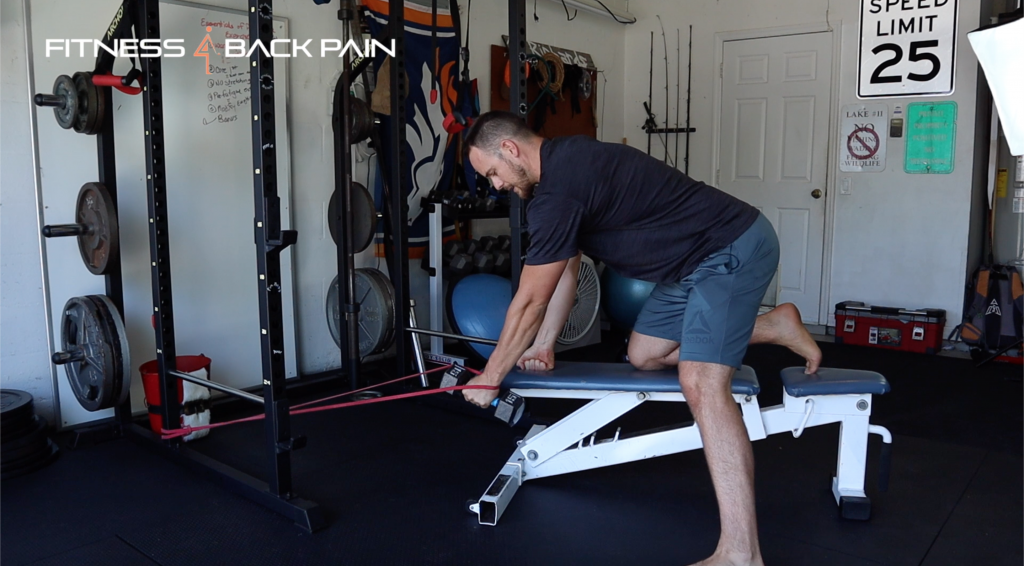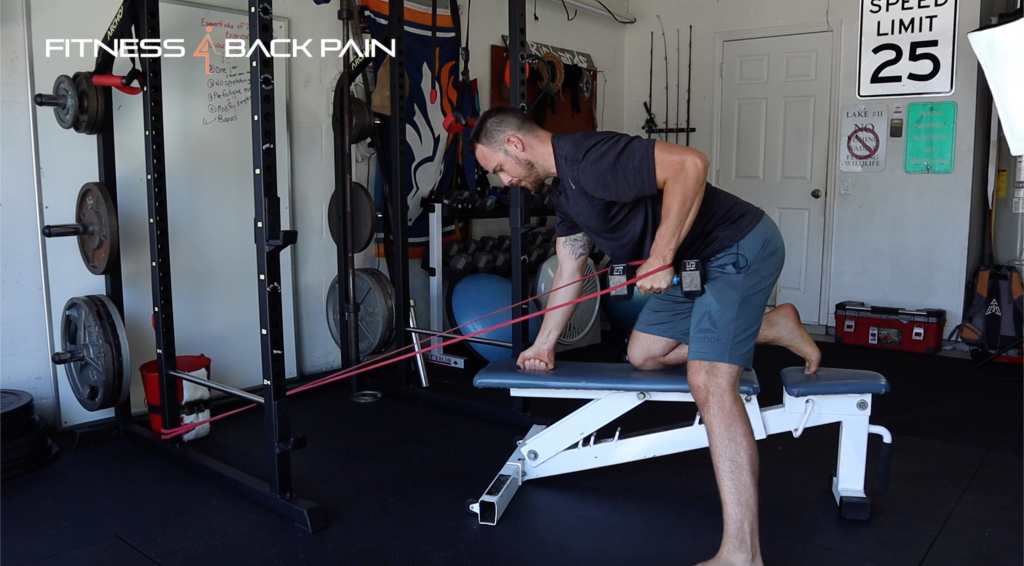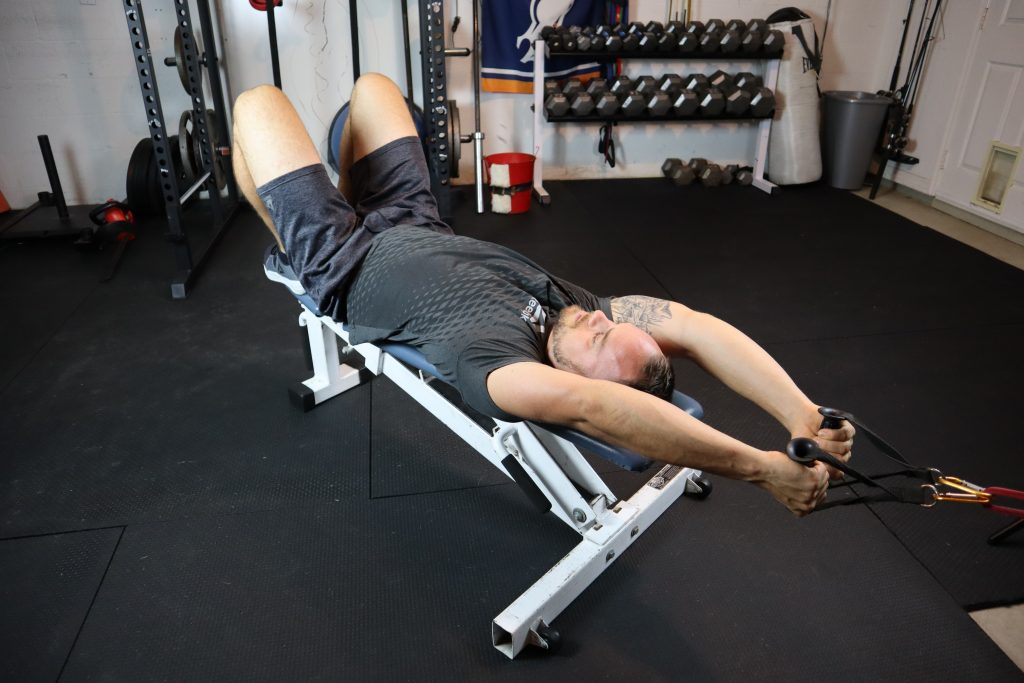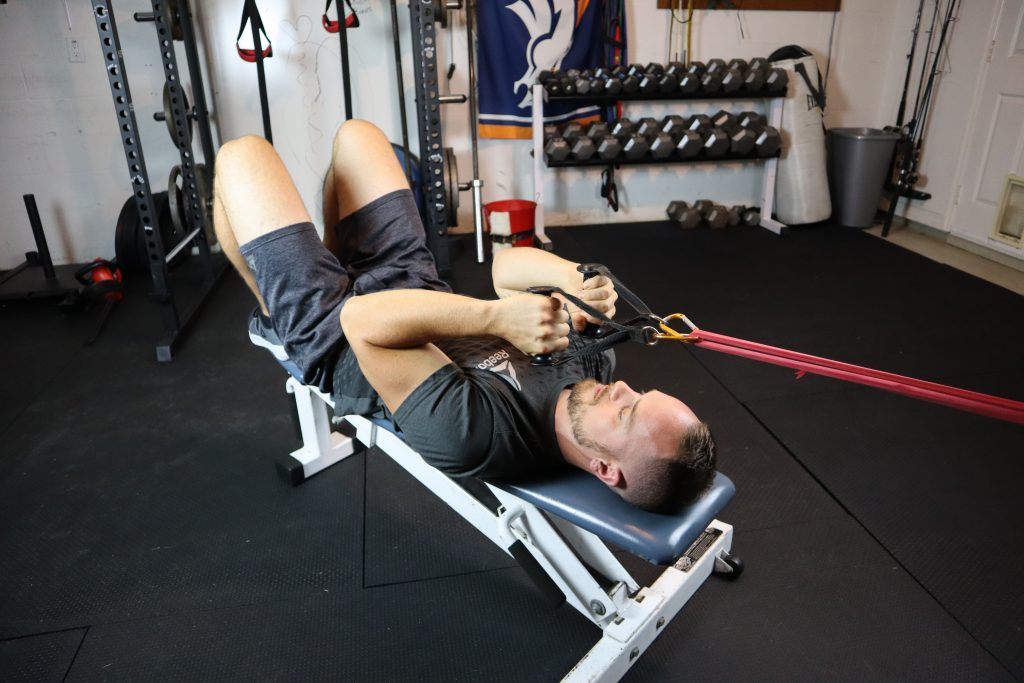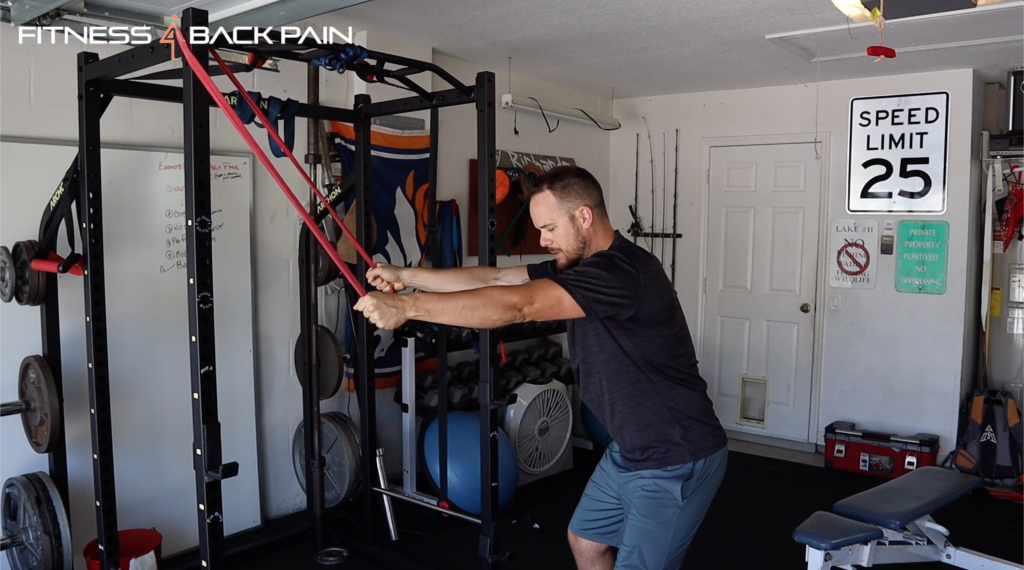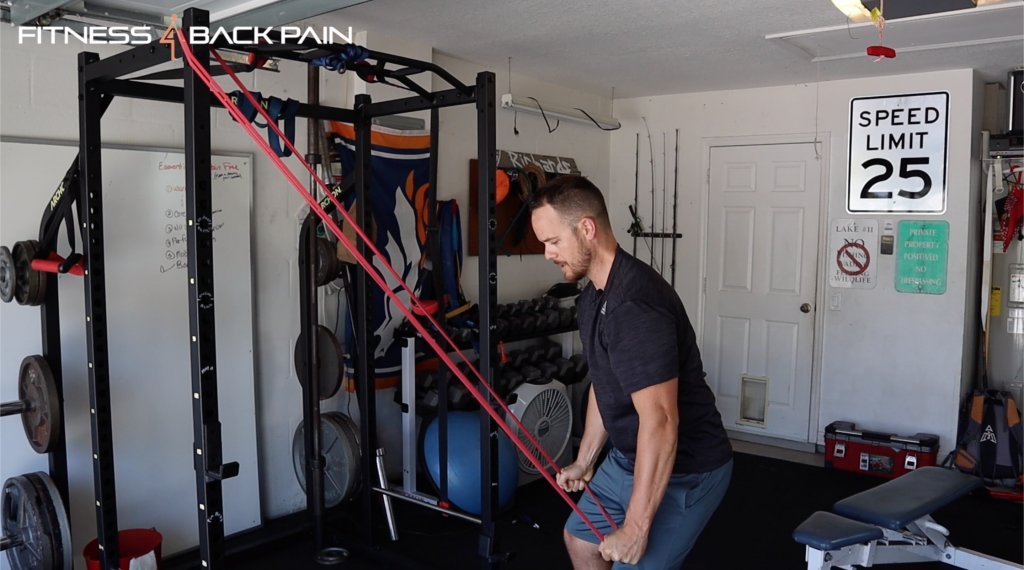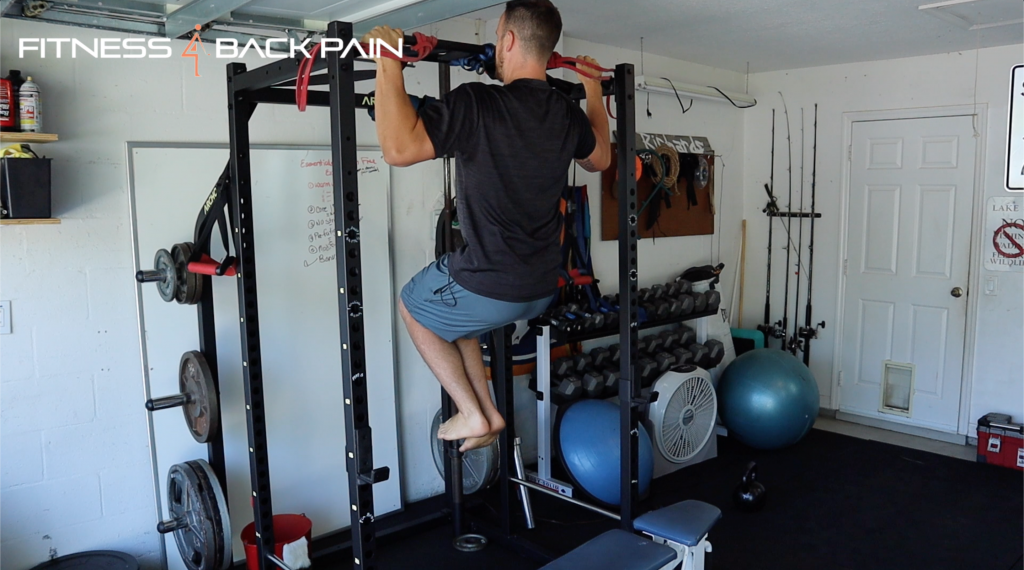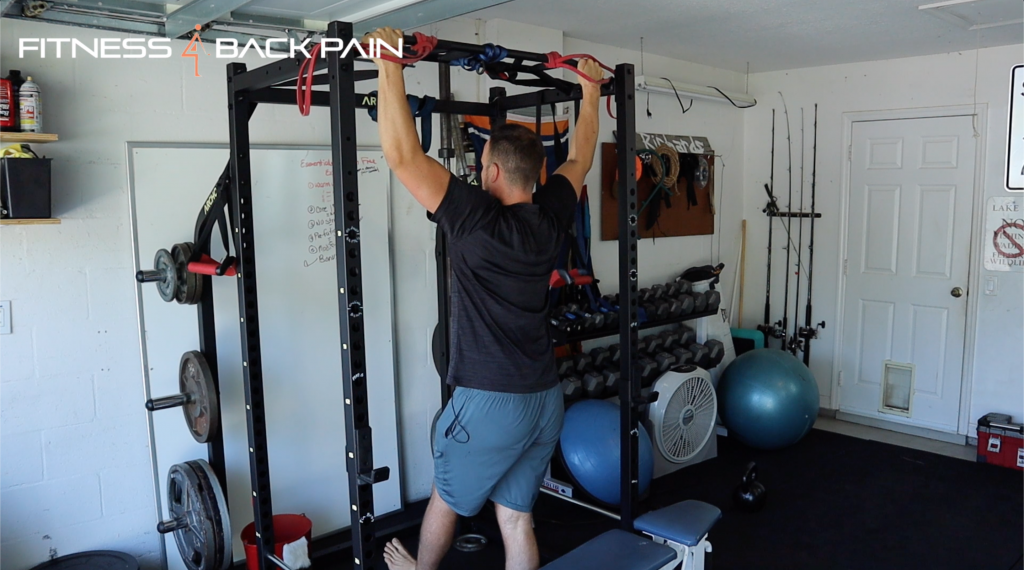Have you been trying to hit your first pull-up with no luck? Hitting your first clean pull-up is one of the best feelings in the world. It’s like the right of passage in the gym world right?!
Now, there are a lot of reasons why you may be struggling to get your first pull-up. It could be due to your body weight, technique or simply a lack of strength in the essential muscles used to do them. All are super common and can easily be overcome!
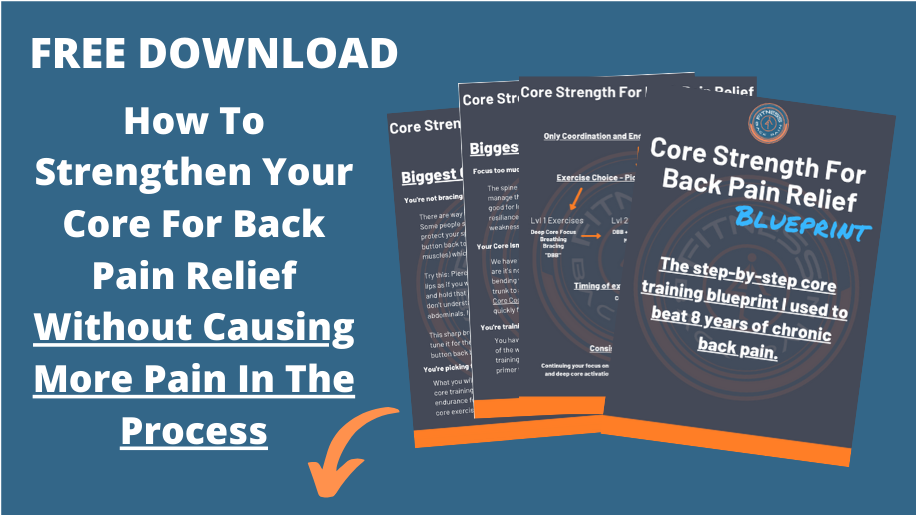
If you know extra body fat is an issue then I encourage you to check out this article I did where I give 6 simple strategies to lose belly fat fast. This literally gives you 6 of the most overlooked yet easy to implement strategies that do NOT require crash dieting or extreme calorie cutting.
The other reason you may not be able to do pull-ups is due to pain. It’s not uncommon for pull-ups to irritate the lower back especially if you have had spinal surgery.
So let’s do this: Put pull-ups aside and start utilizing these 6 pull-up alternatives into your current program. These 6 exercises will not only build the necessary strength to hit your first pull up but it will keep you pain-free in the process.
Without further ado let’s get you building strength to hit your first clean pull up!
My Best 6 Exercises To Hit Your First CLEAN Pull-Up!
#1 Banded Pull Down
Muscle Group Worked: Lats, Mid-Upper Back
The set up:
Pick which variation of the pull-down you want to do either the seated version I show first in the video or the “On-one-knee” version. Me personally, I like the on-one-knee version it’s awesome for sensitive backs.
Once you are set up with the band or cables at a good height. Get into the “on-one-knee” position. Before starting, lock your ribs down, contract the glutes and pretend you are trying to slide the front foot back and the back knee forward (I demonstrate this in the video!).
The Movement:
This is super easy and hard to mess up. Once you are locked in, you’re either pulling the bar down and in front of your head or behind your head. Pick one that fits you best. There is no magical difference between the two variations so don’t get caught up in choosing!
What to look for:
The big take away with this exercise is to know what muscle groups you’re working and when I say “know” I mean feel. There is a difference between going through the motions of an exercise and allowing other muscles like the biceps to take on the majority of the work. Grab the bar and take your sweet time going through each rep. Make them all count and really hone in on what muscles you are trying to activate. The more laser-focused you are the better the exercise will feel and better your results with the exercise will be.
#2 Single/Double Arm Banded Pull Down
Muscle Group Worked: Lats, Mid-Upper Back
The set up:
Pick which variation of the Arm Pull-Down you want to do either the single or double then choose either the seated version I show first in the video or the “On-one-knee” version. Again, I love the on-one-knee version. It’s awesome for sensitive backs.
Once you are set up with the band or cables at a good height. Get into your desired position. Before starting, lock your ribs down, activate your glute using the scissor technique with your legs (discussed in the video) and bring the shoulder you are working first back, down and into a set position. From here you are ready to rock and roll!
The Movement:
Depending on your variation choice you’re essentially going through the same motions you would a straight bar pull down. Except with this set up you have way more control over the position of your shoulder when pulling. I will rarely do any type of pulling or pushing outside of neutral. This might be why my shoulders have been pain-free after 10+ years of heavy lifting…who knows.
What to look for:
You want to take the same approach to this exercise with learning to “feel” the muscles you are trying to work. Grab the bands and take your sweet time going through each rep. Make them all count and really hone in on what muscles you are trying to activate. The more and more laser-focused you are the better the exercise will feel and the better your results with the exercise will be.
#3 Banded Scoop Rows
Muscle Group Worked: Lats, Mid-Upper Back
The set up:
So I love throwing bands on traditional exercises and completely changing how the body needs to respond. Heck, I love just using bands in my entire program! For these “Scoop Rows” you are going to get in the most comfortable one arm row position you can be in. You can do these standing or in the position, you see me in above. To get started, put your hand through the band and grab the dumbbell. This will allow you to drop the dumbbell and keep control over that band. Once you have the band around your wrist and the dumbbell in hand get your body in a locked neutral position and you’re ready to go!
The Movement:
So when doing this exercise what you’re doing is similar to a traditional row but instead, you’re acting as if the dumbbell head that is closest to you has a shovelhead on it. With this mental image, the scooping cue will make more sense. Lock the shoulders in place and start the movement by engaging the lats and “scooping” the dumbbell towards your pocket. Two things will happen. This initial cueing will really engage the lats then once the lats can’t bring the weight any closer to your body you start the “row” movement.
What to look for:
When watching this exercise it looks like you’re doing a traditional row but the cueing is where the magic really happens. To do this exercise right you have to tell yourself to “scoop” while you go to row the weight. The weight you use will not be as heavy as a traditional row and that is okay! There’s a lot going on so you want to focus primarily on control and executing perfect form!
#4 Flat Bench Banded Pull-Downs
Muscle Group Worked: Lats, Mid-Upper Back
The set up:
I go into more detail with options in the video so make sure you check that out! I am using a bench in this variation which can easily be done at home or in a gym. I have my band connected to the rig behind me at head height and have two attachable handles to hold onto. You really want to get good tension on the bands for this exercise to work well so get a partner to pull and hand you the bands or have them pulled out and locked onto something like you see me do in the video. Start with your hands above your head, ribs locked down and core braced (relax your lower back).
The Movement:
This is very similar to a neutral grip cable pull-down except you are lying flat on your back. Those with a sensitive low back will sometimes prefer this option when doing pulldowns which is why they should always be a staple in your program!
Once in position (shoulder blades locked, trunk on) initiate the exercise with the lats and squeeze the rest of the back as the handles come closer and closer to your chest. This should be a pretty comfortable pull even for those with sensitive shoulders.
What to look for:
If you can really build up tension with the bands you want to practice the key form cues that you would follow if you were doing a full-on pull-up.
These cues are: Neutral spine/pelvis, the trunk is on, the lower back is not over contracted, shoulder blades stay locked in position when the handles are on the chest and overhead with arms stretched out. Do not allow the shoulder blades to wing out when the arms are stretched out. Get in the habit of keeping them in place.
#5 Banded Straight Arm Pull Down
Muscle Group Worked: Lats, Mid-Upper Back
The set up:
With this exercise whether you are using bands or a cable, the set up is the same. You want your feet a little wider than shoulder-width apart with a slight bend at the hips. Now, with this bend, you are wanting to hinge at the hips not just tilt the lower back into extension. There is a difference!
Once the slight hinge is set you want to grab the band to where the tension picks up at eye level or a little higher (you can adjust the tension as needed). Grab the band, engage the trunk and lats and you’re ready to rock.
The Movement:
You want to start and finish this exercise with the lats being the main focus. After getting set, initiate the exercise by “sweeping” the hands-down and towards the body without bending the elbows. Imagine putting your outstretched hands on top of someone’s shoulders and trying to press down through their shoulders. Essentially you’re doing the same thing here just without someone’s shoulders stopping you from moving your arms down.
What to look for:
You really can’t mess this one up. Just make sure your elbows are slightly bent, hips are back, weight is evenly distributed across the heels and toes and you’re pulling with the lats. Too much elbow bend and this turns into a bicep and tricep isometric exercise.
#6 Bodyweight Negative Pull-Ups
Muscle Group Worked: Lats, Mid-Upper Back
The set up:
The Negative Pull-Up is hands down the best way to train the correct position and muscle activation for doing a clean Pull-Up. I mean look at it, you’re essentially doing a pull-up just backward. The set up with this is critical because you are teaching the body how to respond in the pull-up position.
Grab a bench and step up onto it. You should be almost eye level with the bar you are going to be hanging from. Grab the bar shoulder-width apart and get to where your chin is above the bar. Before you go weight bearing bring your shoulder blades back and down and lock them in. You are now ready to rock!
The Movement:
Slowly shift your weight to your hands lifting one leg off the bench at a time until you are full weight-bearing. From here your lats should be fully engaged along with your mid to upper back as well. Slowly start to descend 9key is going SLOW) while you keep good form and the load on your lats. Continue to slowly descend until you reach a dead hang. When at the bottom do not let your shoulder blades wing out. Keep them locked and use your legs to take the load off of your hands.
What to look for:
Essentially what you want to stay away from is unnecessary compensations with other muscle groups. This is really easy to do especially if you are just starting to work on hitting your first clean pull-up.
Here are a few insider tips:
- Don’t rush the descent
- Focus on the Lats, Mid, and Upper Back the whole time
- Once your forehead clears the bar shift forward to keep the focus on the right muscle group
- Keep shoulder blades tight and in position even at the dead hang
Boom! These 6 exercises if done weekly WILL build strength in the essential muscles needed to do a clean bodyweight pull-up. The key to training for the pull-up without actually doing pull-ups is to focus on each rep and really give it you’re all. It doesn’t work if you start rushing through exercises or sacrifice form for reps. Be diligent and consistent and you will hit your first pull-up in no time at all!
How to program these exercises into your routine
I would categorize these as “Pull Exercises” which is normally one of the days that I train (Push, Lower, Pull). On the Pull days, I would pick 2-3 of these exercises for the next few months and really focus on them hard. Doing 2-3 sets of each ranging in reps (6-12). Each month I would switch the rep range up to give the body something new to chew on.
As an added bonus I would add 2-3 sets of negative pull-ups to each of my workouts each week as a “finisher”.
Pain with exercise?
There are a few specific reasons exercises could be causing pain and in order to beat it, you have to focus on improving 5 key areas of your workout. If you have not seen it yet, go check out my free workshop covering the essentials of pain-free exercise.
We cover:
- Pre-workout movement essentials to being pain-free.
- How and when to train your core to eliminate symptoms during and after your workout.
- What to stop doing immediately before and after your workout.
- How to organize your exercises in your workout to build strength and stay pain and injury-free.
- Myths about “modifying” exercises and where so many costly mistakes are made.

Thanks for checking it out and be sure to share this with your friends!
What exercise are you going to try in your next workout? Let me know in the comment section!
Your Coach,
William
